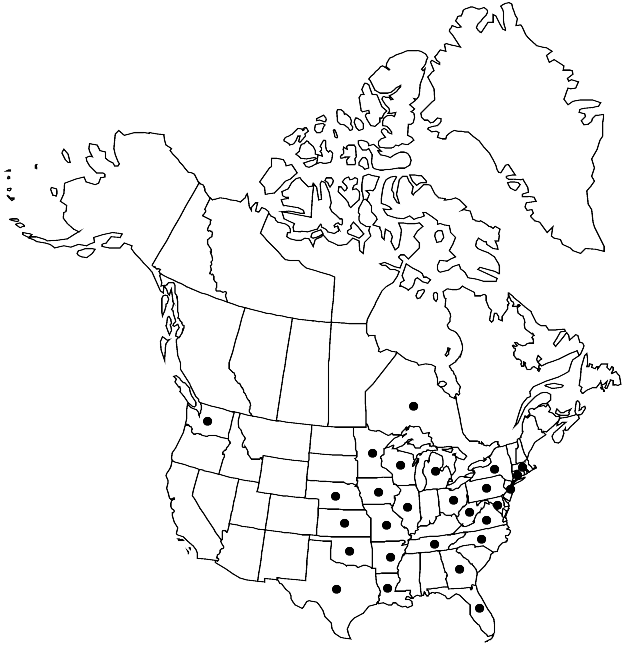Haplocladium virginianum
in H. G. A. Engler and K. Prantl, Nat. Pfla n zenfam. 229[I,3]: 1007. 1907.
Plants small to medium-sized. Stems regularly pinnate; paraphyllia many, filamentous to subfoliose, frequently branched. Stem-leaves erect to erect-spreading, dense, ovate, not plicate, 0.5–0.7 mm; margins plane, weakly serrulate; costa ending in apex. Branch leaves crowded, imbricate, oval, 0.2–0.5 mm; apex acute, apiculate, or short-acuminate; alar cells not differentiated; medial laminal cells roundedquadrate, strongly 1-papillose over lumen, walls incrassate. Capsule strongly inclined to horizontal. Spores 11–12 µm, weakly granulate.
Phenology: Capsules mature spring–late summer.
Habitat: Soil, wood, rock of mesic habitats
Elevation: low to moderate elevations (0-1200 m)
Distribution

Ont., Ark., Conn., Fla., Ga., Ill., Iowa, Kans., La., Md., Mass., Mich., Minn., Mo., Nebr., N.J., N.Y., N.C., Ohio, Okla., Pa., Tenn., Tex., Va., Wash., W.Va., Wis., c Europe
Discussion
Haplocladium virginianum has more regularly branched stems than H. angustifolium and H. microphyllum, while the crowded, rounded, weakly concave branch leaves have shorter apices. The branches are julaceous. The small laminal cells and relatively large single papilla centered over the lumen will also help to identify this species.
Selected References
None.
Lower Taxa
"broad" is not a number.